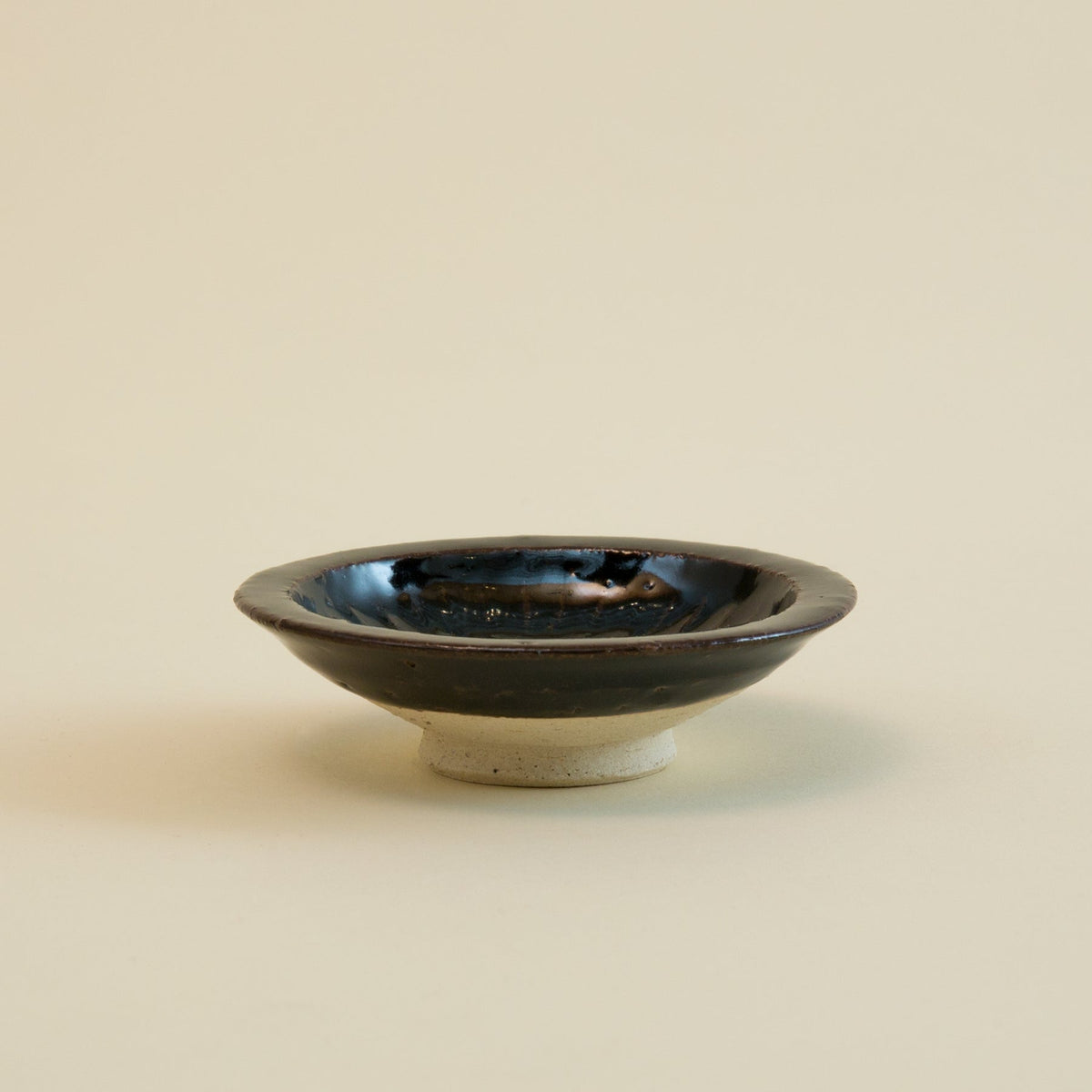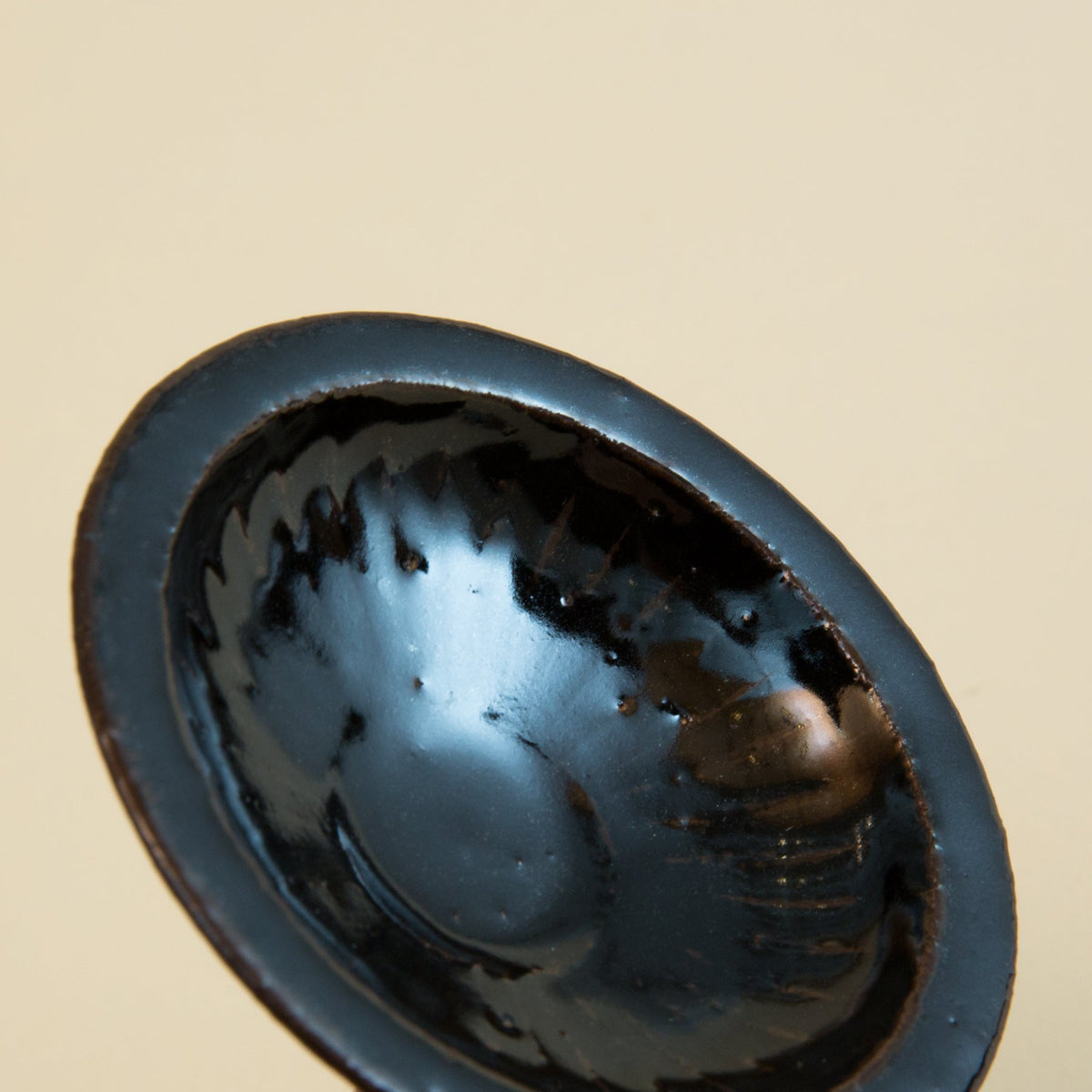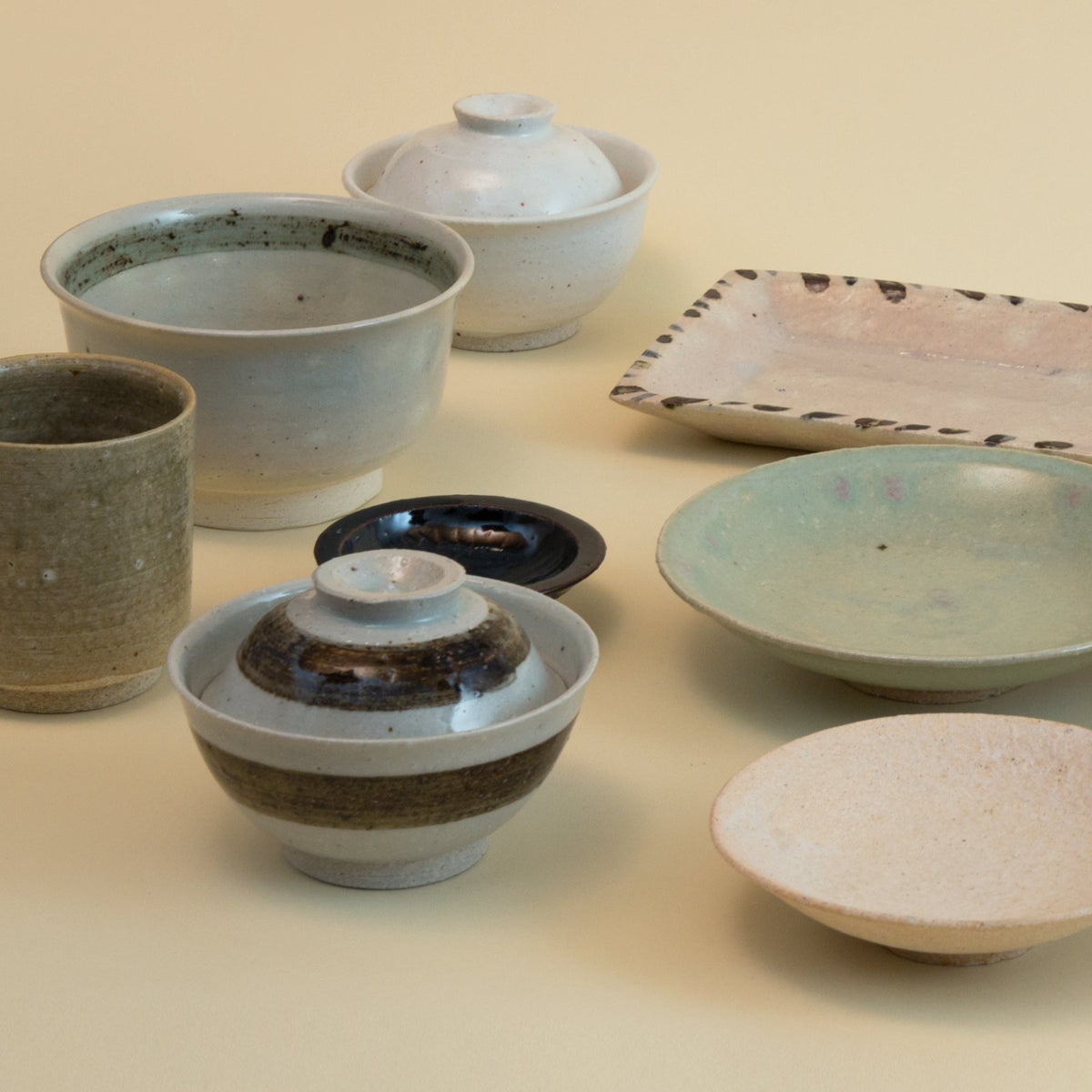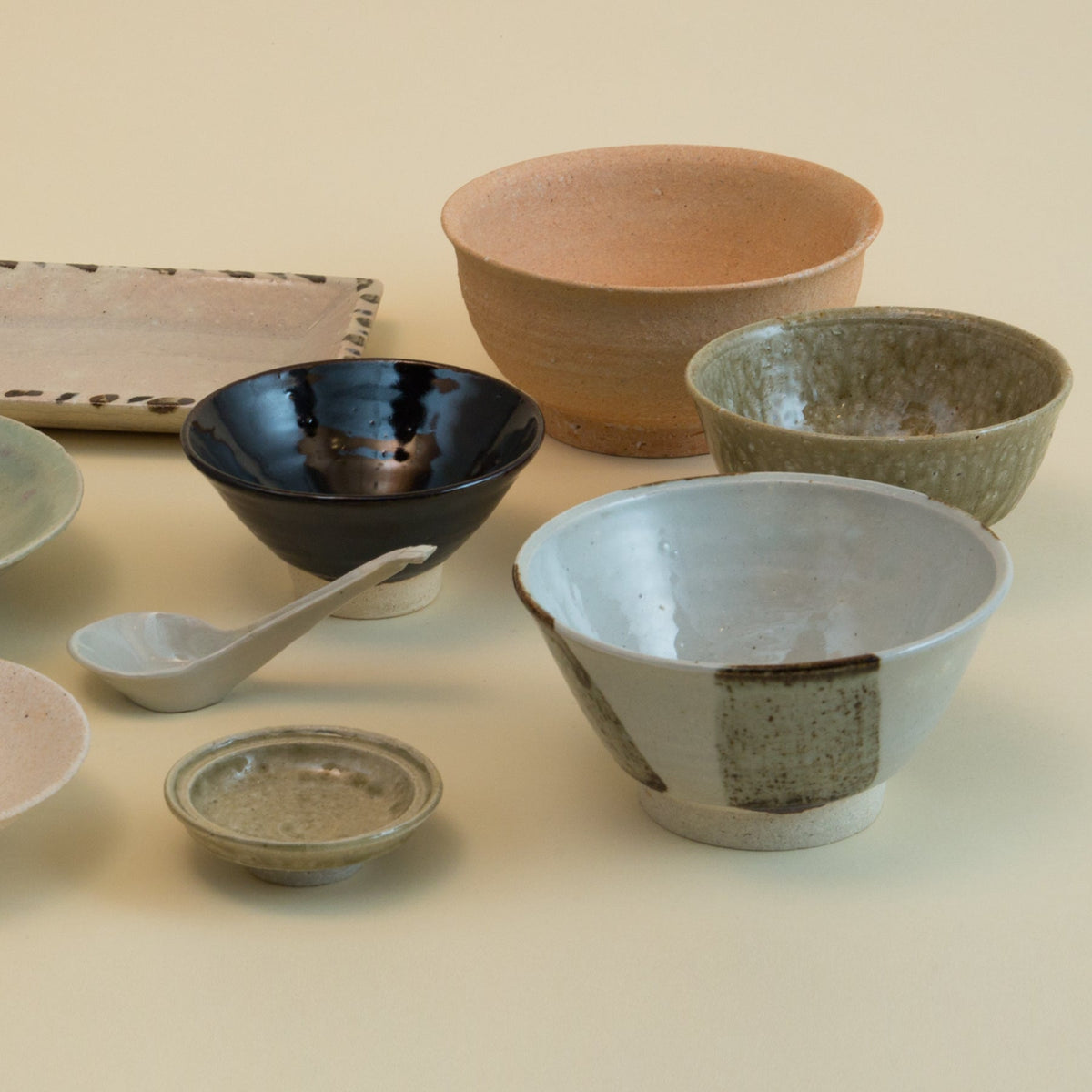Iga Small Plate - Kuroame
Iga-yaki are named after Iga clay, and these ceramics have been made in the Mie prefecture of Japan from as early as the 7th century CE. The remarkable characteristics of Iga clay have made Iga-yaki particularly sought after throughout history. The clay beds in Mie were formed in ancient times when the entire province was submerged under the Biwa Lake. As a result, rich sources of plankton and other microscopic organic matter exist within the clay. These evaporate during the intense firing process, producing a durable, porous material with natural heat retention. The clay can be rough and brittle and this texture requires incredible expertise to handle. Experienced potters spend a life-time perfecting the technique. This means production is limited and each handmade vessel is entirely unique.
Historically Iga-yaki vases were used by feudal Daimyo and other members of nobility as expensive gifts. Modern Iga-yaki are often used in the same way, but are also commonly made for cooking and dining. The high heat retentive qualities of the cups, bowls and dishes means food stays warm, while rice cookers and donabe made in Iga-yaki are the essential utensil for hot-pots, soups and stews. these useful objects, made with traditional materials and great skill retain a natural beauty, and with proper care can last a lifetime.
Item details: Bean plates, or Mamezara are specifically used to serve beans, but are also commonly used for many side dishes and condiments. The tiny plates date back to the early Edo period, and are said to have originated in the Arita, a city in the Kyushu Prefecture renowned for its pottery.
The Kuroame glaze is one of the most traditional used for Iga-yaki. The high concentration of iron gives the glossy finish, sometimes referred to as ‘black candy’.
Measurements: 3.5"
Care Instructions: All Iga-yaki must go through a traditional preparation process called Medome, in order to prevent staining and to seal the dish. Medome translates literally to “pore stopper” and it is necessary to prevent anything from leaking through the tiny holes in the clay. Rinse white short grain rice in a pot of water until the water turns milky white. Take the rice out and place the Iga ware in the water. Gently heat the vessel under a low heat for 20-30 minutes and then let it cool completely. After cooling, remove the Iga ware and rinse it thoroughly. Once it has completely dried it is ready for use. For the best maintenance, towel drying after each use of the Iga ware is recommended.
Do not use dishwasher.





